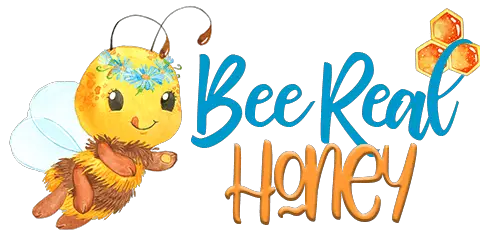*This post may have affiliate links, which means I may receive commissions if you choose to purchase through links I provide (at no extra cost to you). As an Amazon Associate I earn from qualifying purchases. Please read my disclaimer for additional details..
When planning to build a garden, you should consider what plants are best for your environment, the easiest flowers to care for, and the colors you want to exhibit.
But something people often forget to focus on is which plants attract pollinators, such as bees and butterflies.
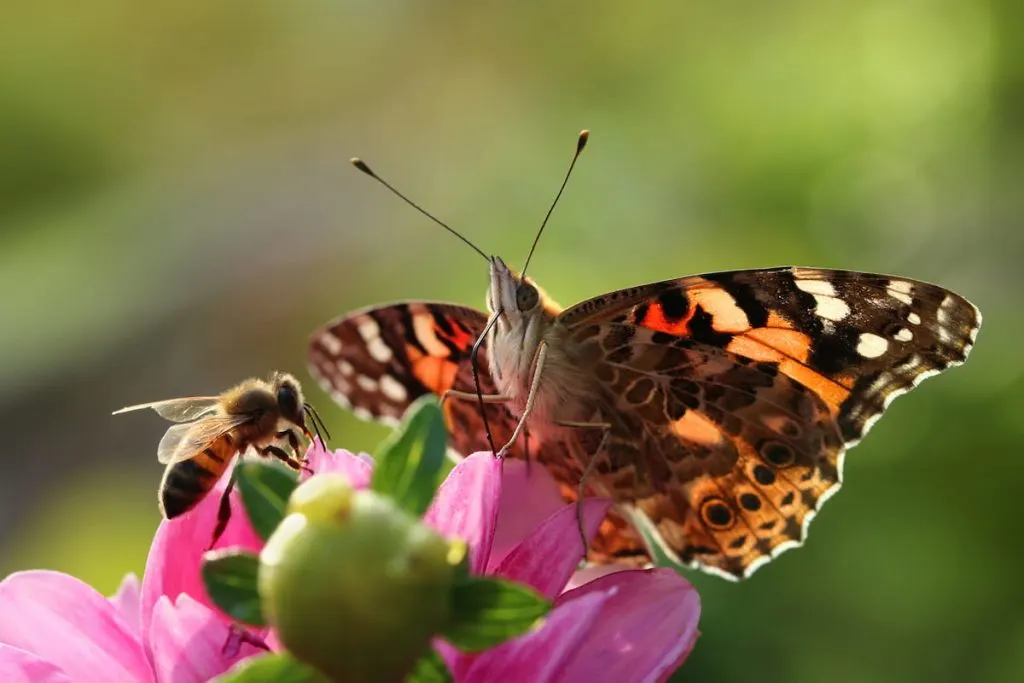
Pollinators are important to our ecosystem. They pollinate plants, such as trees, bushes, fruits and vegetable plants, and even ornamental plants. When a flower is in bloom, that is when you can see bees and butterflies gracefully roaming around in your garden.
For this post, we listed the 16 best plants for bees and butterflies that will make great additions to your garden.
Table of Contents
1. Agastache (Anise Hyssop)

Also known as ‘hummingbird mint,’ the Agastache is a favorite nectar source of bees, butterflies, and hummingbirds. This plant has spikes that form individual blooms, which is vital in a pollinator garden.
Agastache blooms from spring through fall, and their flowers may be lavender, dark purple, peach, blue hues, and more.
This plant thrives in fertile, well-drained soil. It prefers full sun, but will also enjoy partial afternoon shade in a warmer climate. Once established, this plant is drought-tolerant. If they are planted in colder climates, Agastache will die in winter and grow as an annual.
There are various types of Agastache, but the Agastache foeniculum (Anise hyssop) attracts bees, butterflies, and birds. They are also very fragrant and make for a great tea!
2. Allium (Allium giganteum)
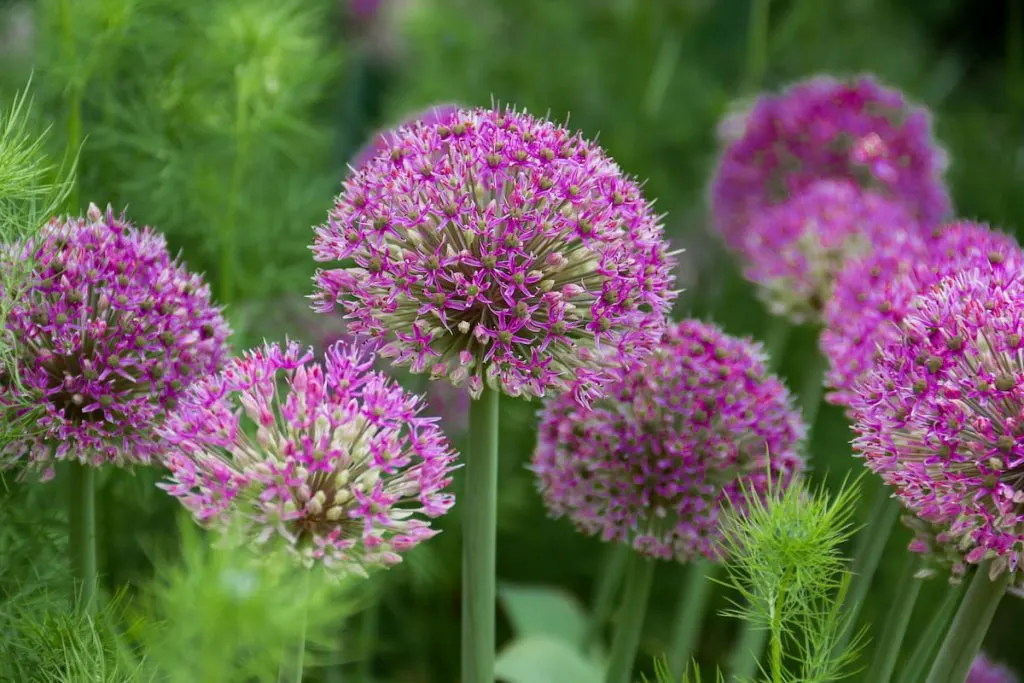
Allium belongs to the onion family. It originated in central and southwestern Asia, but is also cultivated in various countries. Some people also call them ‘Giant Onion.’
On average, Allium grows up to 5 feet high. It produces large, beautiful blooms in spring which highly attracts bees and butterflies.
While they grow quickly in a garden, they don’t fully take over the land, so they can stay in the same place where they are planted for a long time.
3. Aromatic Aster (Symphyotrichum oblongifolium)
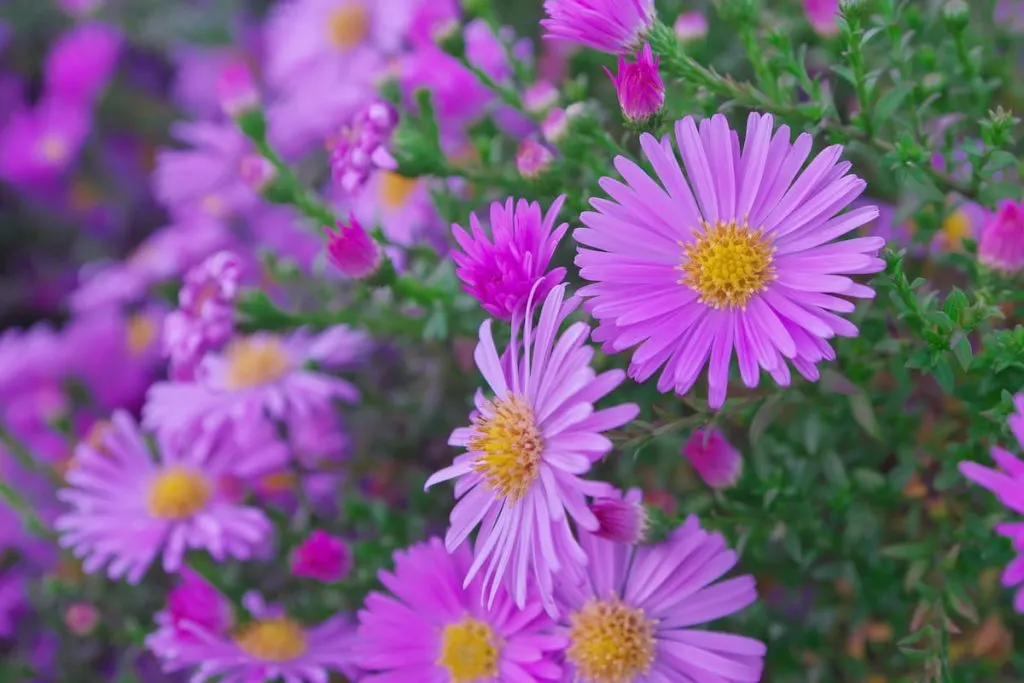
Aromatic Aster is a perennial plant that comes in a variety of colors. This plant has a daisy-like flower with a flower head that is shaped like a star. It grows from 1 to 3 feet tall.
As it grows, the Aromatic Aster’s flowers turn reddish-purple in color. This versatile plant blooms from late summer to autumn in sunny locations, making them an excellent source of pollen and nectar for bees and butterflies during late season.
Despite having ‘aromatic’ in its name, this plant has no aroma. Although, their leaves give off a scent when squeezed.
Aromatic Aster is an easy-to-grow plant. It thrives in full sun, moist conditions, and well-drained soil. If you plant them in hotter climates, ensure that they get partial shade. In addition, this plant is also disease and deer resistant.
4. Bee Balm (Monarda didyma)
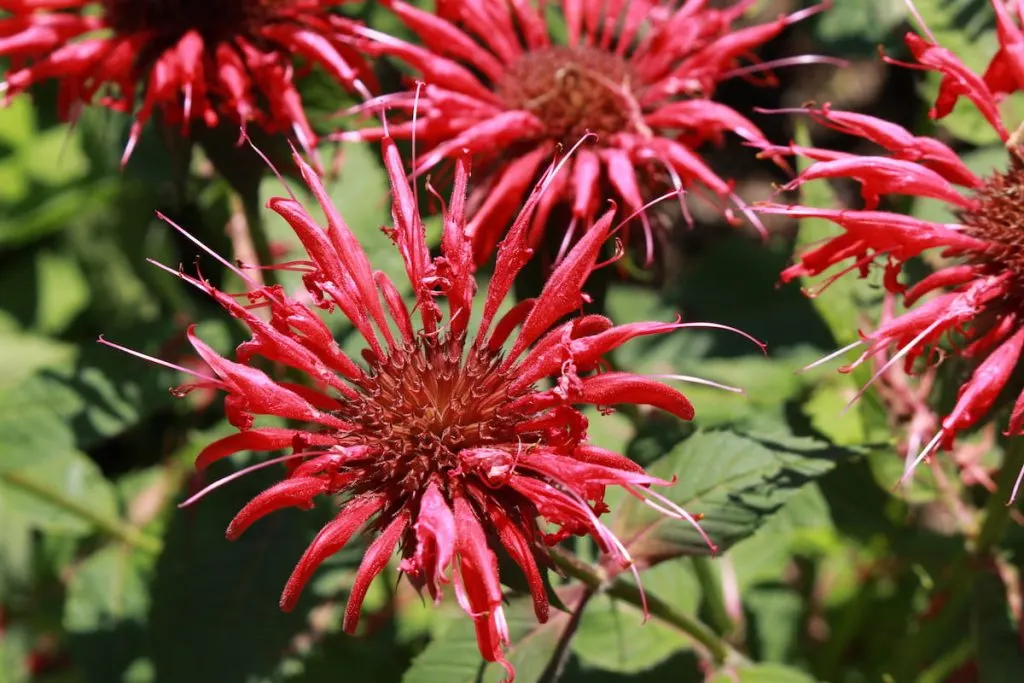
Bee Balm is a common herbaceous perennial that is quickly identified by its distinct appearance. This plant has a strong fragrant smell which attracts pollinators, such as bees and butterflies.
Bee Balm spreads rather quickly, so they need a lot of space to grow and develop. As a perennial, these plants will remain beautiful in your garden for a long time. Bee Balm is found in various colors, including white, pink, and red.
Bee Balm blooms in spring and summer and it should be planted in a sunny area.
5. Butterfly Bush (Buddleja davidii)
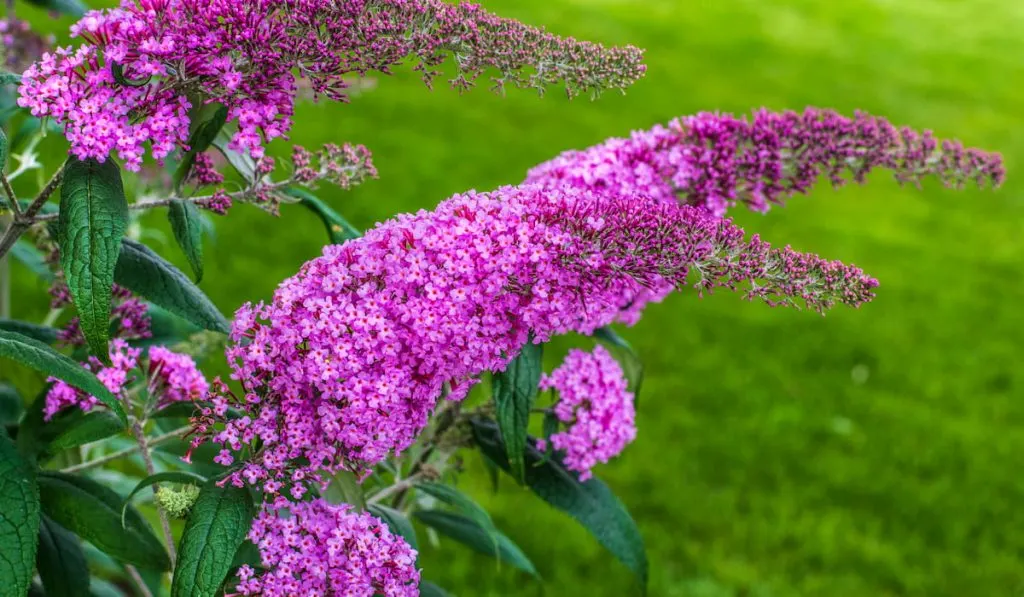
A popular choice among gardeners, the Butterfly bush comes with a sweet fragrance and radiant colors that attract bees and butterflies.
This is a large, quick-growing shrub that grows up to 12 feet tall, although you can also find dwarf variations of this plant.
Butterfly bushes are easy to care for. They need a well-drained soil, and are capable of enduring different climates from wet to dry. This plant blooms in spring and summer.
However, this plant may be invasive to some areas, so it is suggested to choose sterile cultivars that don’t set seed for these plants to not run wild.
6. Calendula (Calendula officinalis)
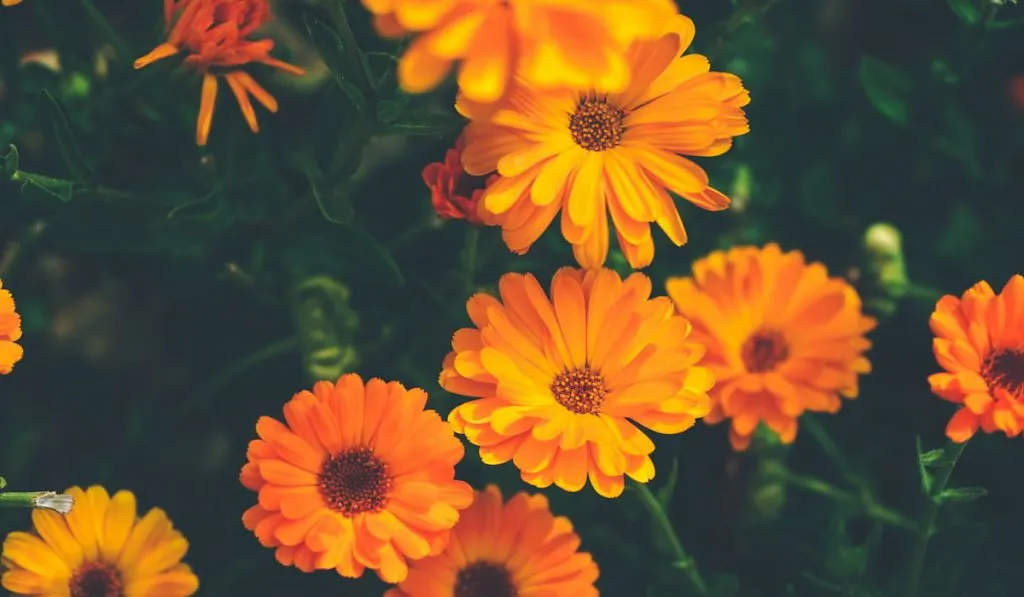
Also known as “pot marigold,” the Calendula is a short, bushy plant. Despite their name, this plant is not a marigold. It has daisy-like flowers that are orange and yellow in color which highly attract bees, butterflies, and other pollinators.
Technically, Calendula is an herb that provides various medicinal benefits. Herbalists use this plant’s flower petals to create soothing, relaxing, and healing tinctures, salves, and infusions.
In addition, their flowers can also make great additional garnish to your salads and other dishes. These plants also repel pest insects, but attract beneficial ones including lacewings, hoverflies, and ladybugs.
Calendula is an annual that grows in zones 2 – 11. It is a fast-growing plant that thrives in full sun, or partial shade in warm climates. The blooming season of Calendula is spring through late fall.
7. Coneflower (Echinacea)

Another plant with a daisy-like flower, the coneflower is a hardy perennial that provides pollen for bees, and nectars for butterflies. It attracts songbirds as well.
The most popular type of this plant that attracts pollinators is purple coneflower, or Echinacea purpurea.
Coneflower blooms from midsummer through mid fall, which gives wonderful color to your garden during late summer.
This plant thrives in zones 3 – 10. They need full sun, but will still be fine in partial shade. They should be planted with well-drained soil that is rich in compost. In addition, Coneflowers are drought-tolerant and enjoy heat.
8. Cornflower (Centaurea cyanus)
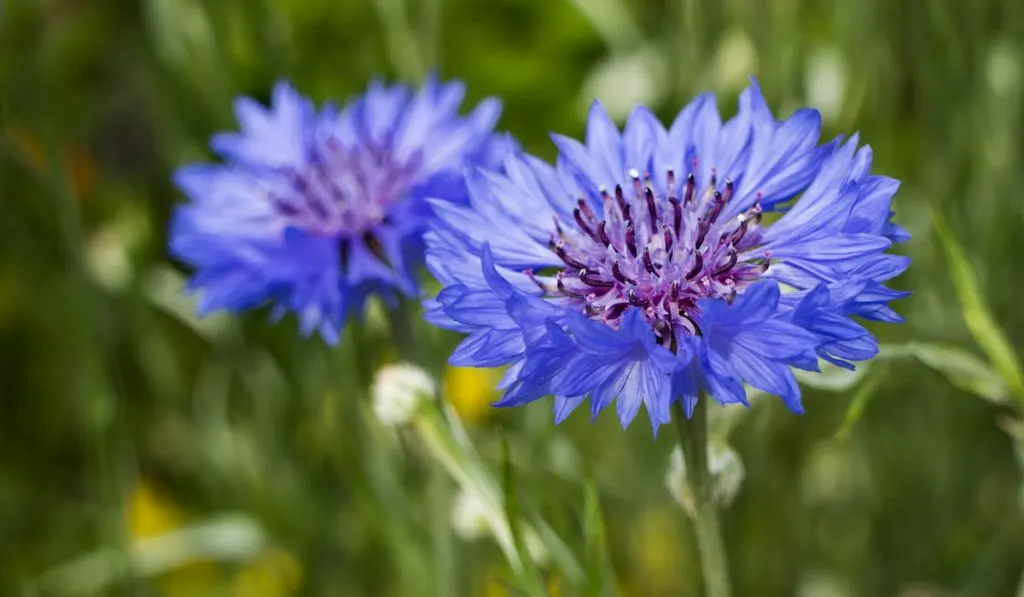
Not to be confused with coneflower, the cornflower is an old-fashioned flower that is easy to care for.
This plant is capable of withstanding drought, and will grow well in most soil conditions.
Cornflowers bloom from June to September, and their flowers come in pink, blue, yellow, white, and purple. While all colors will attract pollinators, bees are more attracted to blue and white-flowered plants.
This plant needs full sun and should be planted in a well-drained soil.
9. Cosmos
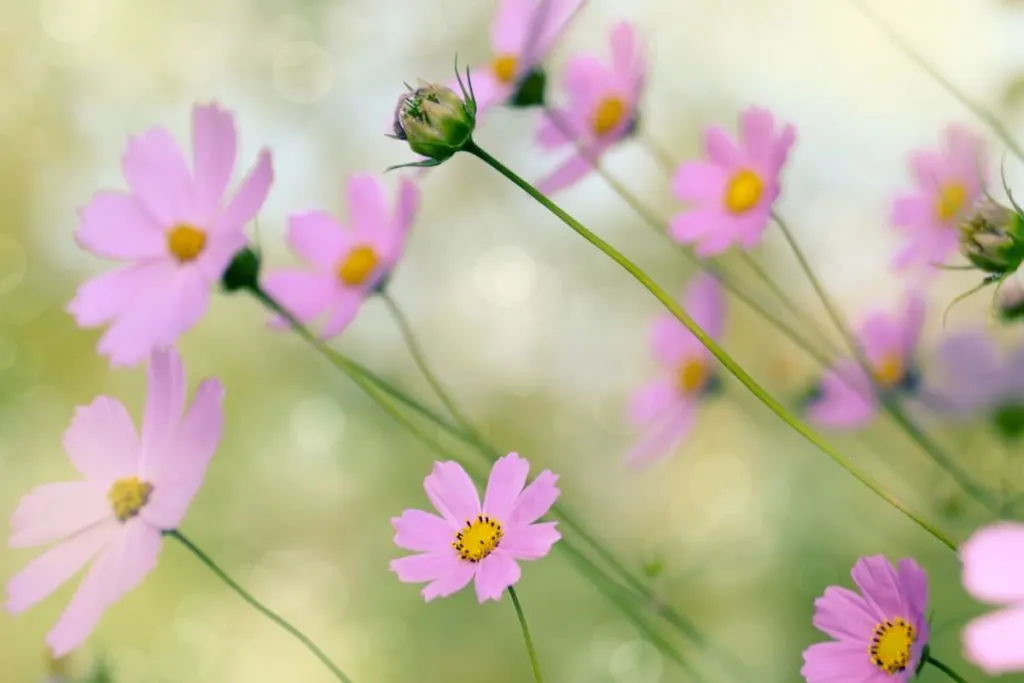
Cosmos is an annual plant with long, slender stems and daisy-like flowers that come in various colors, including white, pink, red, and purple which makes it an excellent cut flower.
This plant grows up to 6 feet tall, and blooms from late spring until frost. Aside from bees and butterflies, moths and birds are also enticed by this plant. As a matter of fact, hummingbirds love this plant.
To grow, just scatter the seeds on bare soil in spring right after the danger of frost is gone. Cosmos can survive both in containers and in garden beds, and even in poor soil conditions!
In addition, this plant can also survive drought, and prefers a warm, dry climate. In the warmest climates, partial shade should be provided.
10. Goldenrod (Solidago)
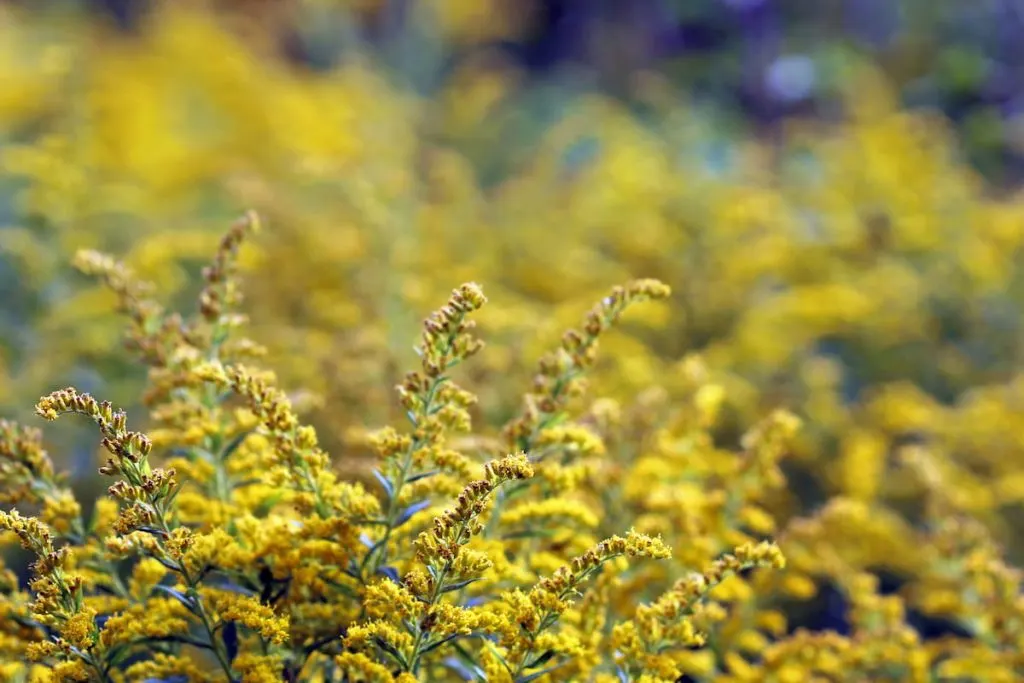
Often confused with ragweed, the goldenrod is a long, slim plant with a weedy-like stem and leaves. It grows as high as 10 feet tall, and it blooms with smooth, golden yellow flower spikes.
Goldenrod belongs to the Aster Family, and there are over 100 varieties of this plant, most of which are domestic to North America.
This plant blooms from late summer through fall, making it an excellent source of pollen and nectar during late season. Goldenrods have a sharp aroma that attracts bees, butterflies, and other beneficial insects.
Goldenrod grows well in well-drained soil, even if the ground is in poor condition. They thrive in full sun to partial shade. Once established, this plant is easy to care for. Beware, because they grow large and spread aggressively.
11. Lavender (Lavandula angustifolia)
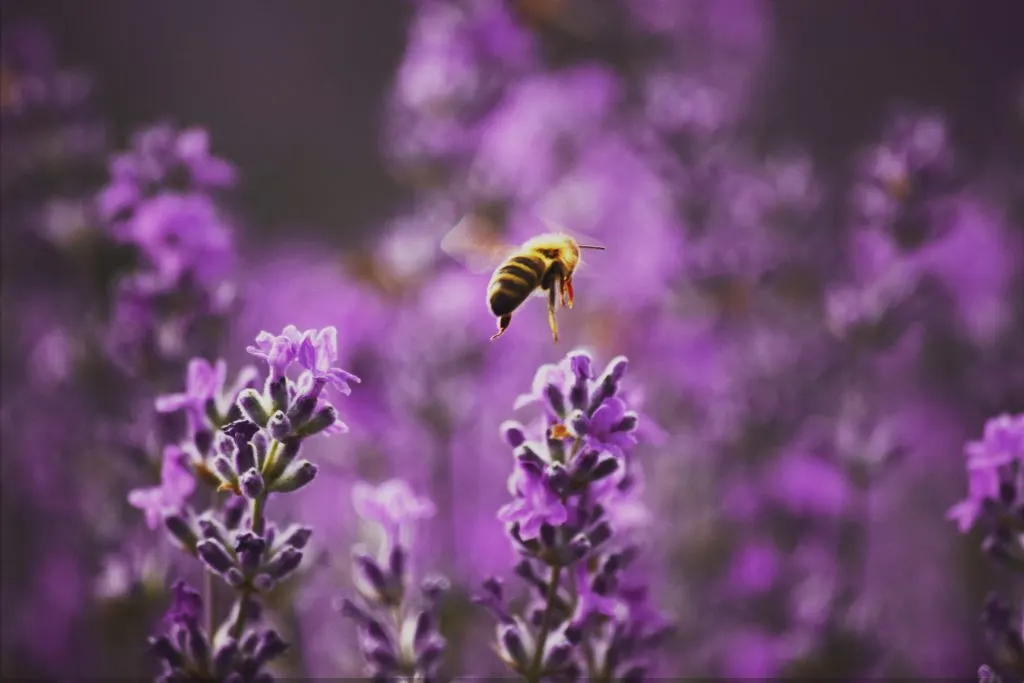
Known for their tall spikes, scented leaves and beautiful purple flowers, lavender is a perennial, small evergreen shrub from the Mediterranean. Lavenders bloom from summer through fall. In milder climates, they can bloom year-round.
Bees, butterflies, and other pollinators are regular visitors of lavender. They also repel mosquitoes and flies. In addition, lavenders can be dried and added in aromatic sachets even used to make more fragrant cookies.
These fragrant plants are drought-resistant, and can withstand hot climates. They’re also an excellent pick for garden borders.
Lavenders require full sun to grow, though they need to be provided with afternoon shade in extremely warm climates.
This plant thrives in a well-drained soil. However, planting lavender from seed can take a while, so it is suggested to buy an established plant from the local nursery.
12. Ninebark (Physocarpus opulifolius)

A highly adaptable flowering shrub, Ninebark acquired its name from its back that can be peeled off in plenty of slim layers, about nine.
Ninebark is commonly used in landscaping, featuring dark green or red leaves that create a captivating teeming hill. This plant blooms in late spring with pink or white flowers that entices bees and butterflies.
Ninebark should be planted in a location where it gets full sun to partial shade, since it blooms best under direct sunlight. It is common for these plants to tolerate varying temperatures and humidity levels, depending on their preferred hardiness areas.
13. Pincushion (Scabiosa)
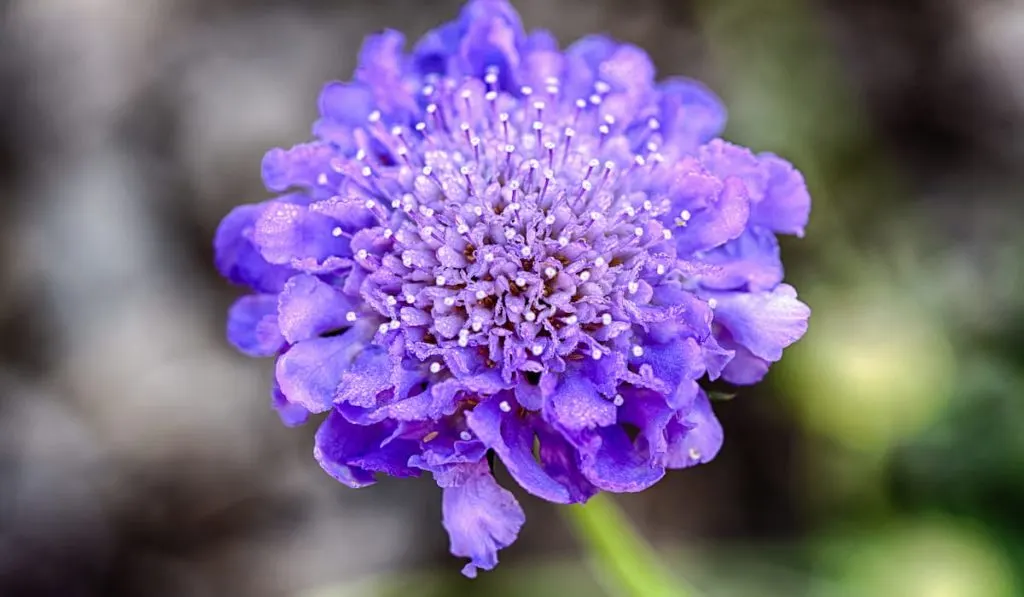
Pincushion is a compact plant that grows about a foot tall, making it an excellent choice to grow in containers and borders. Annual and perennial varieties of this plant exist, and most of them are short.
This plant has round, crimped, bushy flowers that come in various colors, including white, lavender, blue, and pink that attract bees and butterflies. It blooms from late spring through fall, usually depending on their variety.
Pincushions thrive in a mild climate. They do not prefer either overly wet conditions, or hot climates. An average amount of water should be given to these plants – not too much, and definitely not too little.
To grow, this plant needs sun to partial shade with a rich, well-drained soil. Compost may also be added to keep them healthy.
14. Sea Holly (Eryngium tripartitum)

If you want to give a more alluring look to your garden while keeping bees, plants and other pollinators coming, then Sea Holly is a great choice.
This plant has silvery-blue, or blue-green stems with white, silver, green, blue, or violet spiky-toothed leaves. Its cones are green or blue in color.
Sea Holly blooms from summer through fall. Despite not having a fragrant smell unlike most plants that attracts pollinators, this plant’s beautiful appearance is enough to captivate pollinators.
This plant is tough, flexible, and drought-tolerant.
15. Tulips (Tulipa)
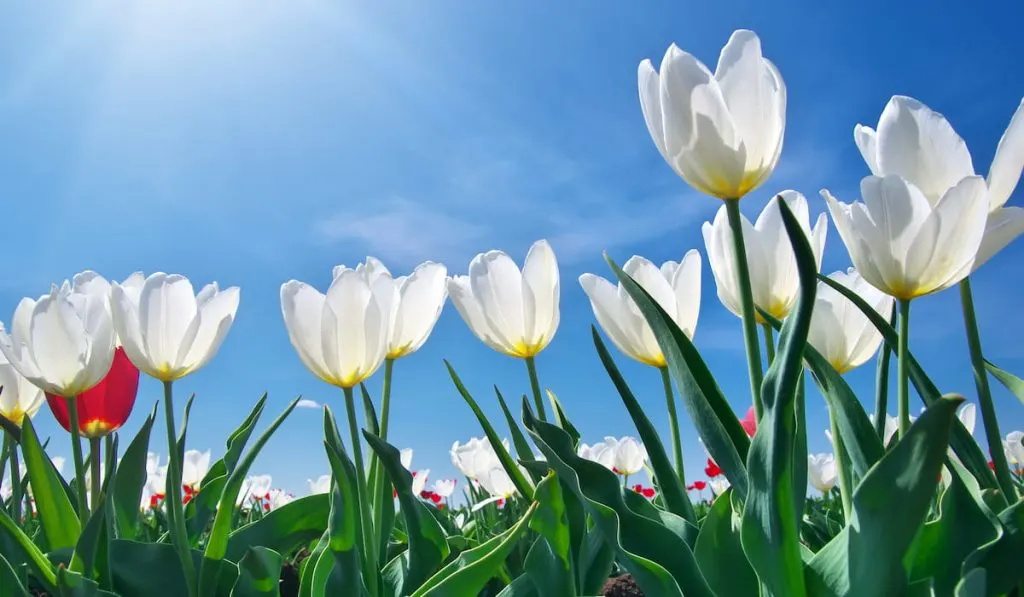
A well-known spring flower, tulips are popular for being well-proportioned. This plant comes in a variety of colors, heights, and forms of flowers. Some sprout a single flower bud, but others can have up to four flowers in one stem.
Other varieties are also fragrant which attracts more bees and butterflies.
Tulips are ranked third of the most famous flowers in the world next to Rose and Chrysanthemum, respectively.
16. Yarrow (Achillea)
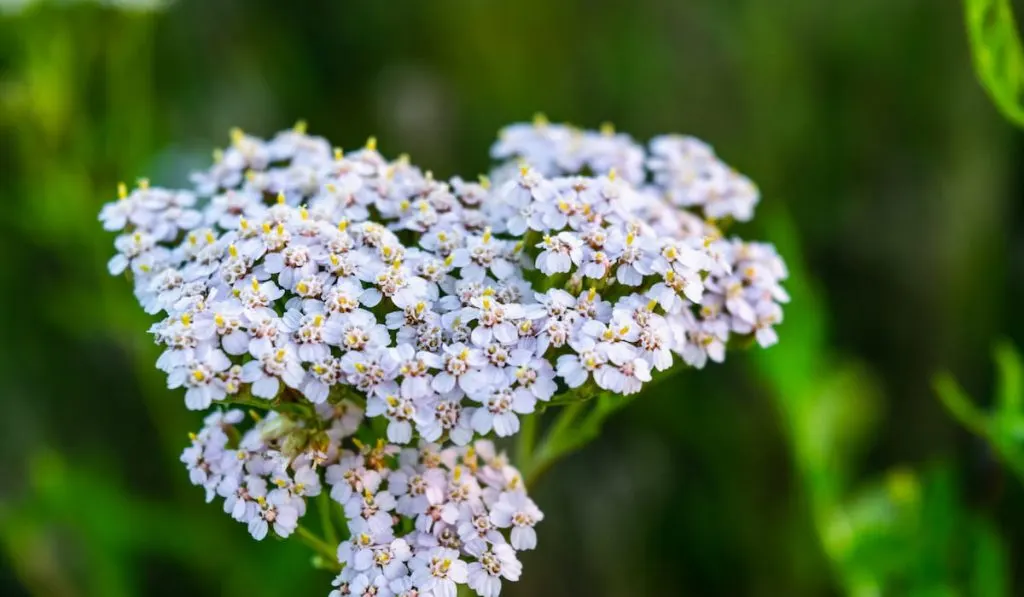
Yarrows have sprawling, small, clustered flowers that appear in various colors, including white, pink, yellow, red, or lavender.
It is a beneficial plant that takes up and keeps essential nutrients and minerals on its tissues, which makes deadheaded flowers a great addition to compost.
This plant blooms from late spring through fall where it attracts bees and butterflies. Ladybugs are also enticed by these flowers.
Yarrows are flexible plants that can grow even in poor to moderate soil conditions, so long as the ground is well-draining. It can also withstand drought, and therefore should not be overwatered.
Most varieties of Yarrows prefer hot, dry climates, although a few varieties tend to get saggy in hot weather after receiving direct sunlight. Partial shade should be fine for all Yarrow varieties.
Final Thoughts
Aside from knowing which plants best attract bees and butterflies, it is also important to know that bees have exceptional color vision.
They tend to gather in white, yellow, blue, and purple flowers. Therefore, if you want to attract more bees in your garden, you should consider adding these colors to your garden.
